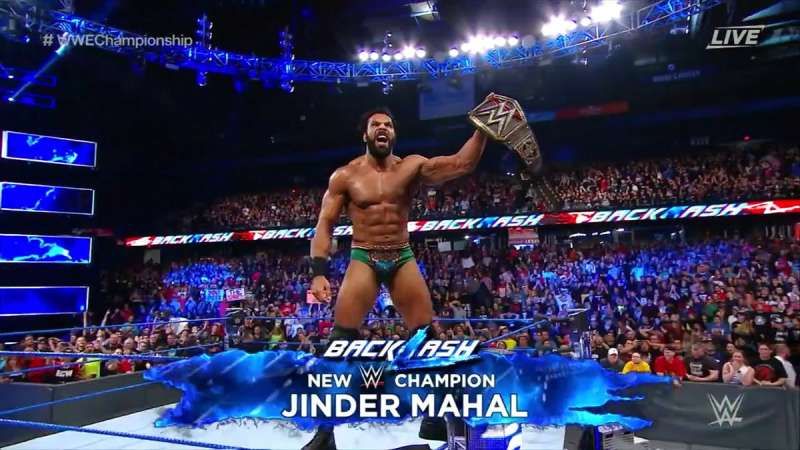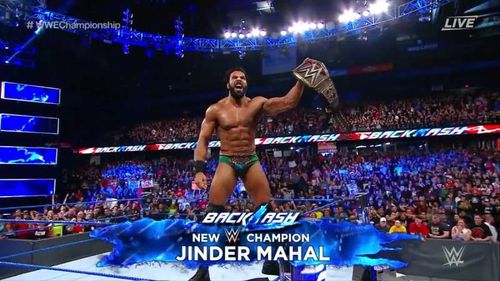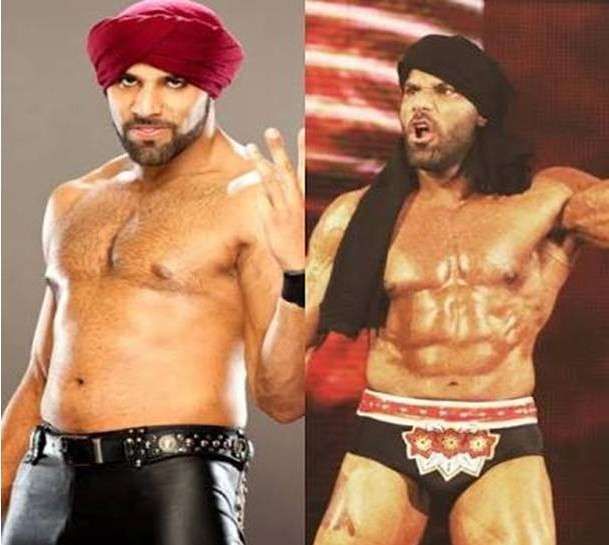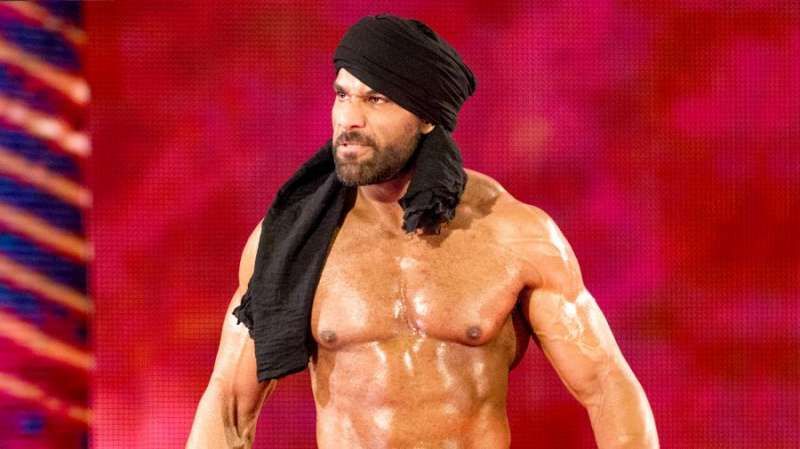
The rise of Jinder Mahal: How an Indo-Canadian became WWE Champion
We have reached a new point in time in WWE history: Jinder Mahal is WWE Champion. No, that isn’t a joke or a typo; the former member of 3MB who was released in 2014 and spent the first part of his return as a sort of Indian pacifist, is now the top champion on SmackDown Live.
Reactions to this win have been interesting, to say the least. On one hand, Mahal winning makes him the poster boy for SmackDown’s catchphrase of the Blue Brand being ‘the land of opportunity’. Had Mahal been on RAW, there’s no chance he would have ever even become #1 Contender for the world championship, much less won the prestigious belt. His victory also adds some diversity to the main event picture, as it was filled by established wrestling veterans and ‘non-WWE’ guys since the 2016 Draft.
Also Read: Interview: Jinder Mahal comments on his WWE Championship win, his journey to the top, Brock Lesnar and more
On the other hand, there has been a storm of criticism regarding the decision to push Mahal, first as #1 Contender, and now as WWE Champion. His overall work rate isn’t as impressive as, say, A.J. Styles, Sami Zayn or Kevin Owens. His gimmick, that of an ‘angry foreign heel’, is quite outdated and hard to pull off successfully.
Finally, and most importantly, much of the debate surrounding Mahal has centered on his push being based either on his drastic change in physique and WWE’s attempt to expand further into the Indian market, a market that hasn’t had a prominent star since the days of the Great Khali.
So how did Mahal get here? How did a former jobber with a terrible win/loss record become the WWE Champion? We’ll look at his rise to the top below.
Jinder Mahal’s WWE career began on a lukewarm note. Instead of being pushed as a unique character or as someone special, he was shoehorned into a feud with The Great Khali. This feud was centred on things that had nothing to do with wrestling: family members, dowries and humiliation.
From his first feud and match, people did not care about Jinder Mahal. He had nothing worth going for him, especially since he was cast as a heel against the gargantuan Khali, who was likewise miscast in his role as a ‘Punjabi Playboy’.
Also Read: 5 things Jinder Mahal must change to be acknowledged as a main event star after winning the WWE Championship
After over a year of doing virtually nothing, Mahal joined Heath Slater and Drew McIntyre, and the trio became known as 3MB. These were the most obvious of comedic jobbers, lacking any legitimacy as wrestlers whatsoever. Even J&J Security had more credibility as threats, despite the fact that they were human pinballs, being thrown around by their enemies with ease.
Even when Jinder Mahal was part of 3MB, it was clear that he wasn’t meant to play more than a bit part. 3MB was very much about Heath Slater, and both Mahal and McIntyre. As a result, once 3MB disbanded, there was nothing for Jinder Mahal to do. He was released in June of 2014, and wouldn’t return to the company for two years.
Mahal returned to WWE in 2016 and was immediately thrust into a high profile feud that would show off his vastly improved technical abilities. Just kidding! He was given a cheesy ‘Inner Peace’ gimmick and appeared mostly in terrible skits that were meant to show off WWE’s poorly-written comedy style.
It was clear that nothing would come from all of this, which made many professional wrestling critics question why WWE even signed Mahal in the first place. After all, Jinder is/was a fulltime talent and thus was paid a full contractual salary to act as a jobber. If WWE was in such need of jobbers, why would they spend so much on Jinder Mahal instead of paying a local athlete a paltry sum to get demolished like they did with Braun Strowman’s early victims?
Unless, of course, the plan was to push him in the future – which they did – beginning in December.
Also Read: Interview: Jinder Mahal wants to defeat John Cena and other WWE legends after Backlash win
When Jinder Mahal returned to WWE programming in December of 2016, there was a major change in his appearance – his physique had changed dramatically! He was far more chiselled and muscular than before, which led to some fans unofficially dubbing him ‘Hardbody Mahal’ (which would’ve actually been a much better name than simply ‘Jinder Mahal’).
Of course, these changes soon led to the criticism and scepticism, with many people believing that Mahal’s massive change in physique could’ve only come about as a result of steroids or human growth hormone or some other sort of ‘enhancement’.
Yet despite these questions, Mahal still received a strong push. He was drafted as part of the post-WrestleMania 33 Superstar Shake-Up and won a six-pack challenge to become #1 Contender to the WWE Championship. This was despite the fact that he was the last man eliminated from the Andre the Giant Memorial Battle Royal and lost to Mojo Rawley the week prior to this critical victory.
Shortly thereafter, Triple H spoke on Jinder Mahal’s WWE Championship pursuit:
“Jinder is a guy who has always worked extremely hard. He trains hard; he’s very intense about what he wants with his career; he’s very thoughtful...To Jinder’s credit and to Drew (McIntyre)’s credit, they left, they went and figured it for themselves, they improved. They’re both men now as opposed to kids trying to make it in the business...Now hopefully they are in a better position to succeed.”
As the weeks progressed, even more rumours began to circulate regarding Mahal’s sudden push. Those within WWE’s innermost circles suggested that Mahal’s push was taking place in an attempt to bring WWE further into the Indian wrestling market.
With WWE undergoing a huge expansion program into the likes of the UK, Japan, China, and India, it appeared that it was necessary for WWE to push someone that would, at the very least, generate more intrigue in WWE on the Indian subcontinent.
However, Mahal continued to feature prominently and developed further as a character. His new gimmick was that of an angry foreigner that disliked America for being prejudiced and lacking in diversity (sound familiar, anyone?). He also appeared to be wealthy, or at the least highly influential, as he managed to recruit the Singh Brothers to become his lackeys, à la J&J Security.
Going into Backlash, there was a widespread belief that none of SmackDown’s titles would change hands. Had this happened, this would’ve meant that Jinder Mahal’s main event push would’ve been all for nought. This was a once-in-a-lifetime shot for Mahal, and he had to win this match to make an impact. Had he lost, there’s little doubt that he wouldn’t have gotten another shot at the championship.
But win it he did. And now, Jinder Mahal has become the WWE Champion, against all odds and despite the overwhelming belief that Orton would win in order to feud with other rising stars on SmackDown.
So what can we learn from Jinder Mahal’s story? Well, sometimes it matters more what your actual superiors think instead of what society at large thinks. Even though Mahal’s push and subsequent WWE Championship victory have been met with controversy (to say the least), backstage authorities and important people in WWE were and are proud of Mahal for his hard work and dedication to improve.
It seems that mentality is one of the key reasons why Mahal won the championship; it wasn’t enough to just win it, but now he wants to further improve his skills and show the world that it wasn’t a fluke of a victory.
Also Read: Jinder Mahal's WWE Championship win is the right move for the company's new era
So now we find ourselves at a turning point for SmackDown Live. Jinder Mahal has gone from a jobber and a joke character to WWE Champion. He showed that if someone works hard enough, they can indeed achieve big things.
So I for one say, congratulations to you, Mr. Mahal. Let’s hope that your continue to show progress and excitement on SmackDown Live.



